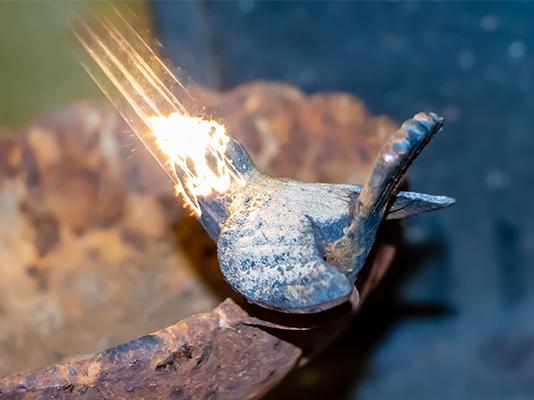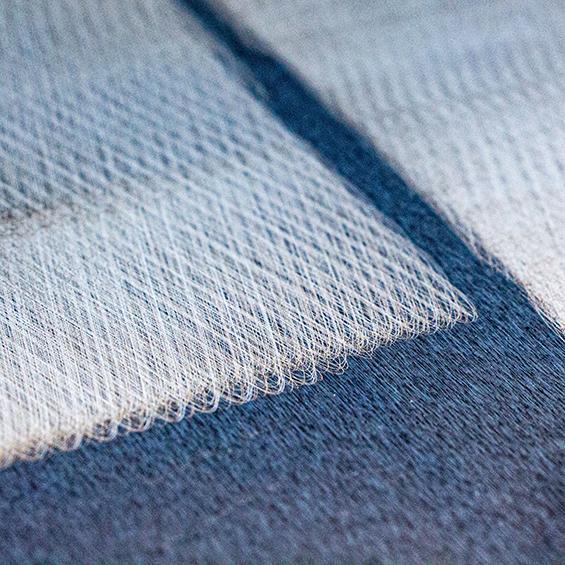
Laser Cleaning Can Be Used To Remove Rust, and Across a Variety of Industrial Applications
Laser cleaning (also known as laser ablation) is a much safer alternative to traditional abrasive blasting methods. Laser blasting aims at increasing productivity and speed while protecting workers from the hazards of abrasive blasting materials. Laser technology is also significantly better for the environment when compared to traditional technology. This makes laser cleaning an ideal solution across a wide variety of surface cleaning applications like removing rust, paint removal, corrosion removal, and surface preparation.
What Is Laser Cleaning and How Laser Cleaning Works
Fiber Laser Cleaning Technology is a proven, state-of-the-art solution for the 21st Century. It works by aiming brief pulses of high-power laser energy (in the µs–ms range) at the surface to be cleaned. The energy applied to the top layer being removed doesn’t dissipate. Instead, it blasts off the material being cleaned through the process known as laser ablation. For example, the Laser Photonics 2000-CTH-Jobsite uses a 2000W fiber laser to break the molecular bonds between the corrosion and the substrate, which in turn vaporizes contaminants through sublimation, leaving the surface untouched. Any remaining removed material may be suctioned and collected into a filtration as particle dust.
Laser Photonics leads the way with technologies such as CleanTech™ Laser Blasting™. Laser Blasting (a.k.a. Laser cleaning and laser ablation) is a non-contact, environmentally friendly process that removes surface coatings from metals, concrete and delicate substrates such as composites – with minimal impact on the base material. Laser Blasting can replace sandblasting or dry ice blasting in nearly every industry and every application where abrasive blast cleaning is used. It is effective on glass, ceramics, metals, composites, plastics, and much more, and provides greater control and precision than possible with the legacy technologies it is designed to replace. LP portable Laser Blasting systems expand cleaning from the floor to the hangar, and beyond. Laser Blasting is being applied to fuselages, airfoils, control sources, turbine blades, and rocket engine nozzles, as well as small parts and sensitive materials.
Laser Blasting Rust
Rust is caused by the oxidization of metal when exposed to water. This significantly reduces the lifespan and performance of the affected metal part. Traditionally, rust removal was achieved by grinding and cutting away affected areas. With a laser, rust is removed through sublimation, which means the physical state of the rust is changed from a solid to a gas, skipping the liquid state. The substrate is left untouched because once the laser reaches the metal, the laser beam is reflected. In addition to the end result, other factors that make laser-blasting surpass sandblasting include cost, safety, and reduced environmental impact.
To learn more, read about the top ten advantages of laser cleaning


Laser Surface Preparation
Another common industrial laser application is surface preparation. CFRP’s (carbon fiber reinforced plastic) are composite materials commonly used in assembling aerospace structures. To reduce weight and increase structural integrity, these components are often bonded together with adhesive. To ensure the reliability of bonded joints, the surface preparation method is critical. The surface prep stage must be highly controlled to create robust, predictable, and repeatable bonds. Laser ablation can provide an efficient and precise means of cleaning and texturing composite surfaces for adhesive bonding. By precisely focusing the laser, specific profiles can be produced to increase surface area for greater adhesion and added strength. Other advantages of using laser systems for surface prep include eliminating physical waste, such as abrasives, and their disposal, adding robotic automation capabilities, and ultimately reducing margins of error by introducing high levels of precision, control, and accuracy.
Advantages of laser surface preparation
- Chemical-free
- Contact-free
- Minimal residue
- Precision and control
- Speed
Not All Laser Systems are Created Equally
Laser Photonics leads the way in innovative industrial laser systems. We implement solid-state fiber lasers and introduced our proprietary autofocusing C-Optics, which dramatically increase efficiency and accuracy by reducing fall-off. They are designed to handle complex contours and varying focal distances unlike anything else on the market. Our competitors can’t offer this revolutionary function, yet our Made In America laser systems remain competitively priced and incredibly reliable.
See More Samples of Our Products in Use Across a Variety of Applications

About Laser Photonics Corporation
Laser Photonics Corporation, based in Orlando, Florida, is the leading industrial company in high-tech laser systems for laser cleaning, laser marking, laser cutting, laser engraving, 3D printing, and other materials processing applications. Our systems are—currently and historically—used by manufacturers in the aerospace, automotive, defense, energy, industrial, maritime, and medical industries around the world. The Laser Photonics brand is associated with a number of worldwide licenses and patents for innovative and unique laser products and technologies. The brand has, for over three decades, been the workhorse of industry-standard laser subtractive manufacturing.
